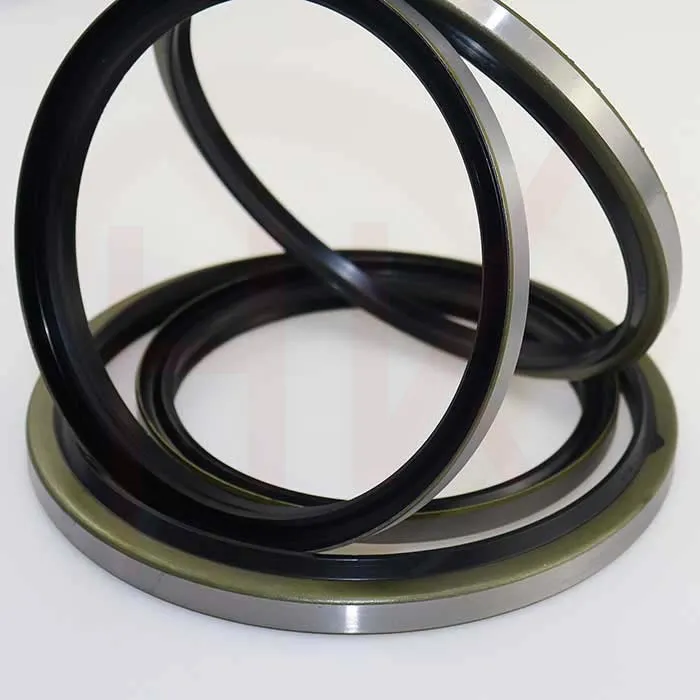ഡിസം . 29, 2024 23:37 Back to list
radial oil seal
Understanding Radial Oil Seals Essential Components in Machinery
When it comes to the design and maintenance of machinery, the importance of seals cannot be overstated. Among these, radial oil seals play a crucial role in ensuring the efficient operation and longevity of mechanical systems. This article delves into the function, construction, types, and applications of radial oil seals, shedding light on why they are integral to various industrial applications.
What is a Radial Oil Seal?
A radial oil seal is a device used to contain lubricants or fluids within a machine while preventing external contaminants from entering. Typically made from elastomeric materials such as rubber, these seals are designed to fit snugly against rotating shafts or stationary surfaces. The name “radial” refers to the orientation of the seal's design where the seal operates by maintaining a tight fit against the radial surface of the shaft.
Function of Radial Oil Seals
The primary function of a radial oil seal is to prevent the leakage of lubricating fluids, which is crucial in maintaining the efficiency of machinery. Leakage can lead to a variety of problems, including increased friction, overheating, and ultimately, mechanical failure. Additionally, these seals work to keep dirt, dust, and other contaminants from entering the machine’s internal components. By doing so, they help maintain the integrity of the lubricant and protect sensitive machinery parts from abrasive wear.
Construction of Radial Oil Seals
Radial oil seals are typically made up of several key components
1. Seal Body This is usually composed of synthetic rubber or elastomer, providing flexibility and resistance to wear and tear. The seal body is designed to comply with the surface it is sealing against, creating a tight fit.
2. Metal Case Many radial oil seals come with a metal casing that helps maintain the seal's shape and enhances durability. This casing also assists in installing the seal within the machinery.
radial oil seal

3. Lip The lip is the part of the seal that comes into contact with the shaft. It’s specially designed to provide a dynamic sealing action, accommodating shaft movement while preventing leakage.
4. Spring Some designs include a spring that exerts pressure on the lip, ensuring that it maintains contact with the shaft, especially under varying operating conditions or temperatures.
Types of Radial Oil Seals
Radial oil seals come in various designs tailored to specific applications. Some common types include
- Single-lip seals These are the most basic form and are used where contamination is not a primary concern. - Double-lip seals These provide added protection against contaminants and are often used in more demanding environments. - V-rings A specific type of radial seal that is typically mounted to the rotating shaft and provides excellent sealing capabilities, especially in high-speed applications.
Applications of Radial Oil Seals
Radial oil seals are extensively used in a multitude of industries, including
- Automotive Used in engines, gearboxes, and hydraulic systems to ensure that oil does not leak out and contaminants do not enter. - Aerospace Essential for applications involving high-performance machinery where the integrity of lubricants is critical for safety and performance. - Industrial machinery Found in motors, pumps, and compressors, radial oil seals help ensure optimal operation and long service life.
Conclusion
Radial oil seals may seem like small components, but their contribution to the smooth operation of machinery is significant. By preventing oil leaks and keeping out harmful contaminants, they play an essential role in increasing efficiency and extending the lifespan of equipment. Understanding the types and functions of radial oil seals can aid engineers and maintenance personnel in selecting the appropriate seals for their specific applications, ultimately enhancing operational reliability and reducing maintenance costs. As technology continues to advance, innovations in seal materials and designs promise to further improve the effectiveness of radial oil seals in the years to come.
-
TCN Oil Seal Metal Ring Reinforcement for Heavy Machinery
NewsJul.25,2025
-
Rotary Lip Seal Spring-Loaded Design for High-Speed Applications
NewsJul.25,2025
-
Hydraulic Cylinder Seals Polyurethane Material for High-Impact Jobs
NewsJul.25,2025
-
High Pressure Oil Seal Polyurethane Coating Wear Resistance
NewsJul.25,2025
-
Dust Proof Seal Double Lip Design for Construction Equipment
NewsJul.25,2025
-
Hub Seal Polyurethane Wear Resistance in Agricultural Vehicles
NewsJul.25,2025
-
The Trans-formative Journey of Wheel Hub Oil Seals
NewsJun.06,2025
Products categories
















